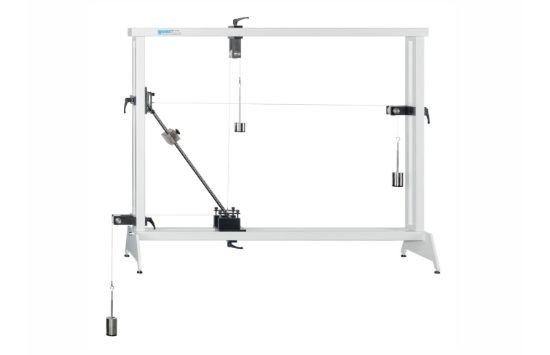The principle of “freeing” in engineering mechanics allows forces and moments acting on a body to be made visible. In this process, a body or a system such as a bar are virtually removed from the environment. All forces acting on the body or on the system are replaced by standardised symbols. This results in a simplified model of the body or system, which clearly demonstrates the relationships between forces and moments.
In the experiment SE 110.53, we demonstrate the principle of “freeing”, which refers to establishing static equilibrium. The experiment uses a model of a ladder with a sliding clamp weight.
The top support is designed as a floating bearing and the bottom one as a fixed support. The real effective support forces can be fully compensated by applying cable forces in the x and y directions.
The ladder is in a state of equilibrium without changing the angular position and without the need for structural support. The ladder is “free”. For students, the result is a convincing example for the principle of “freeing” in statics.
The parts of the experiment are clearly laid out and securely housed in a storage system. The entire experimental setup is constructed in the SE 112 mounting frame.

Equilibrium in a single plane, statically determinate system
The principle of “freeing” in engineering mechanics allows forces and moments acting on a body to be made visible. In this process, a body or a system such as a bar are virtually removed from the environment. All forces acting on the body or on the system are replaced by standardised symbols. This results in a simplified model of the body or system, which clearly demonstrates the relationships between forces and moments.
In the experiment SE 110.53, we demonstrate the principle of “freeing”, which refers to establishing static equilibrium. The experiment uses a model of a ladder with a sliding clamp weight.
The top support is designed as a floating bearing and the bottom one as a fixed support. The real effective support forces can be fully compensated by applying cable forces in the x and y directions.
The ladder is in a state of equilibrium without changing the angular position and without the need for structural support. The ladder is “free”. For students, the result is a convincing example for the principle of “freeing” in statics.
The parts of the experiment are clearly laid out and securely housed in a storage system. The entire experimental setup is constructed in the SE 112 mounting frame.
